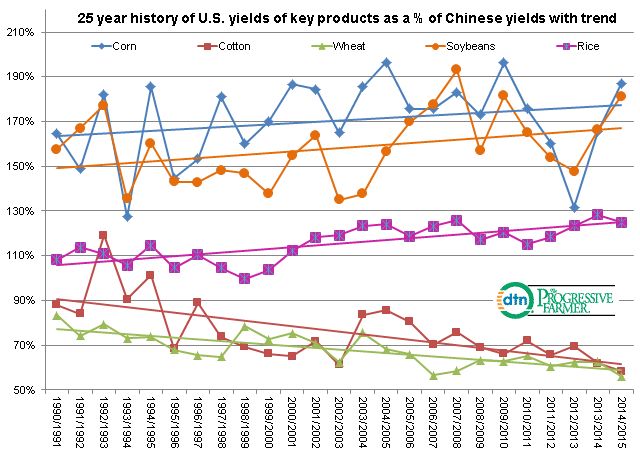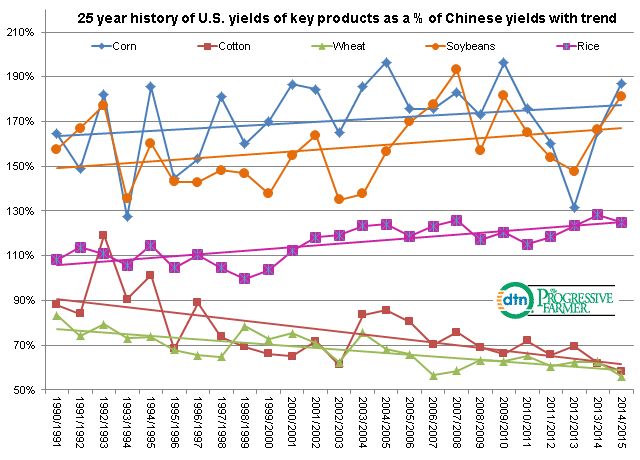Fundamentally Speaking
U.S. vs. Chinese Yields of Key Ag Items
China is back is back in the news in regard to U.S. corn with talk that they will now allow imports of that commodity and related feed byproducts containing the formerly banned GMO gene MIR162.
Rumors that China has imported anywhere from 0.5-1.0 million metric tons of DDG over the past two weeks and may be ready to buy some U.S. corn have given futures a nice boost.
The question is why China would want to buy U.S. corn when supposedly they have up to 120 million tonnes in reserve and produced close to a record crop this year.
Some reasons include reports that large amounts of Chinese corn are moldy and have gone out of condition, a deficit of corn in the main feeding regions and skepticism over the reliability of Chinese production and stocks estimates.
P[L1] D[0x0] M[300x250] OOP[F] ADUNIT[] T[]
One major problem with China is their yields of many key agricultural commodities lag those of other countries, particularly the U.S. by a wide margin.
This graphic shows a 25 year history of Chinese corn, soybean, wheat, rice and cotton yields as a percent of U.S. yields along with the 25 year trend.
U.S. corn, soybean and rice yields are much higher than Chinese yields and in recent years our corn yields have been double those of China, soybean yields more than 75% higher and rice yields 25% better.
Reasons include China not utilizing GMO seeds, severe levels of water and ground pollution and lack of the latest technology including GPS seed dispersal and planting and harvesting equipment.
On the other hand, better Chinese yields of wheat and cotton relative to U.S. figures are due to Chinese emphasis on quantity over quality.
Much of China's wheat crop is used for animal feed so farmers are more concerned with maximizing production as opposed to the U.S. where wheat's main use is for milling purposes where protein, kernel hardness and color are much more important characteristics than yield.
A similar situation for cotton where in China the main consideration is maximizing yields whereas in the U.S. cotton is grown for quality, especially the acala and Pima varieties that yield far less than the typical upland varieties.
(KA)
© Copyright 2014 DTN/The Progressive Farmer. All rights reserved.






Comments
To comment, please Log In or Join our Community .